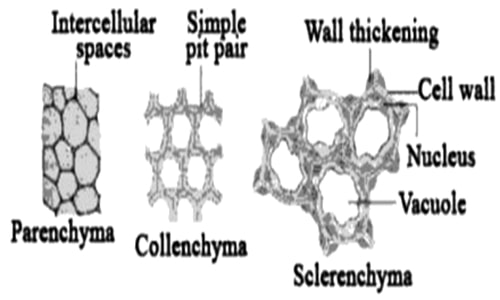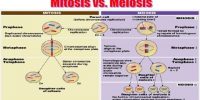A simple tissue is made of only one type of cells. Tissues of same kinds compose simple tissue. This tissue is called epithelium in animals and epidermis in plants. Simple tissues are of three types, namely, parenchyma, collenchyma, and sclerenchyma.
Parenchyma: The Parenchyma is walled living cells. It generally develops from ground meristems. The cells restrain a huge nucleus and big vacuoles. Characteristics of parenchyma tissue are as follows:
- Cells are almost uniform in length, breadth, and depth.
- Cells are round, oval or polygonal in shape.
- Cell walls are evenly thick.
- Cells are living and contain sufficient protoplasm.
- There may have intercellular spaces between adjacent cells.
Functions of parenchyma:
- The parenchyma of the epidermis protects the plant organs.
- It is the main organ taking part in diffusion and osmosis.
- It is the storage tissue for food and water.
- It helps in the transport of food matter.
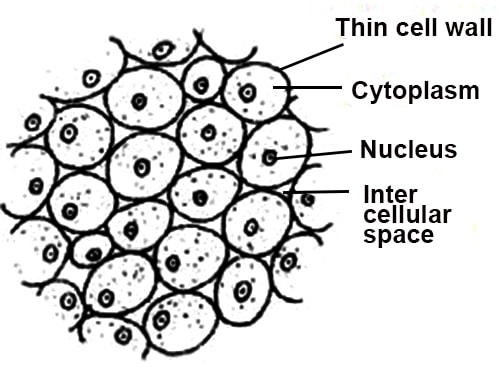
Fig: Parenchyma
Occurrence:
It occurs in the simple tissue of epidermis of root, stem and leaf, hypodermis, peric pith, medullary rays, mesophyll cells, mesocarp of fleshy fruits, embryo, etc. It presents in the primary plant body, i.e., pith and cortex originate from the ground meristem.
Chlorenchyma: Permanent – tissues that Thin cell wall contain chlorophyll are called Chlorenchyma. The permanent simple tissue consisting of unevenly thick walled living cells are called collenchymas. They might surround chloroplast, helping in photosynthesis.
The chlorenchyma of leaf IS called Mesophyll. Parenchymatous tissues with large air spaces In aquatic plants are Aerenchyma.
Structure and Functions:
- Chlorenchyma manufactures food materials.
- They store reserve food.
- They help, in transporting the food materials.
- Parenchyma in the epidermis act as a defensive organ.
- It gives rigidity to plant body.
- It has extensible and plastic cell walls, which gives effectual mechanical strength.
- They may surround chlorophyll and facilitate in photosynthesis.
Position: Usually pith, pith rays, epidermis and most of the cortex are made of this tissue.
Occurrence: The collenchymas generally remain in the hypodermis of the stem and also in the base petiole and pedicel.
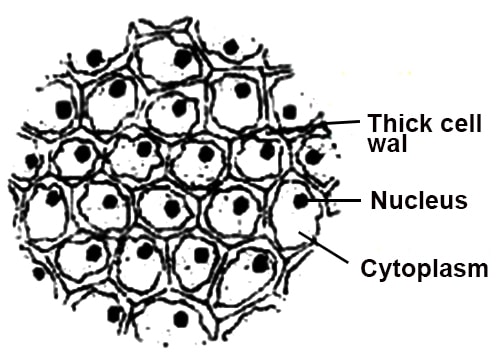
Fig: Chlorenchyma
Sclerenchyma: The permanent simple tissue consisting of evenly thick-walled dead cells are named sclerenchyma. The cells are dead without protoplasm. They normally die upon reaching maturity but continue to fulfill their structural purpose in the plant.
Characteristics of Sclerenchyma are as follows:
- Cells elongated and the ends are pointed.
- Cell walls being lignified become thick and the thickness is uniform. Mature cells are dead and without nucleus and protoplasm.
- In transverse section they are polygonal.
Structure and Functions:
- To give mechanical strength to different organs of the plant is the main function.
- Some dead cell may store excretory substances of plants.
- Sometimes it forms hard outer wall to protect the inner soft portion, e.g. seeds of coconut and date-palm
- The sclerenchyma gives rigidity and mechanical strength to plant organs.
- They are very hard and heavily lignified in nature.
- The cell walls with very low water content.
Position: They are present in cortex, phloem, and pericycle.
Occurrences: Sclerenchyma cells occur in many different shapes and sizes, but two main types occur: fibers and sclereids.
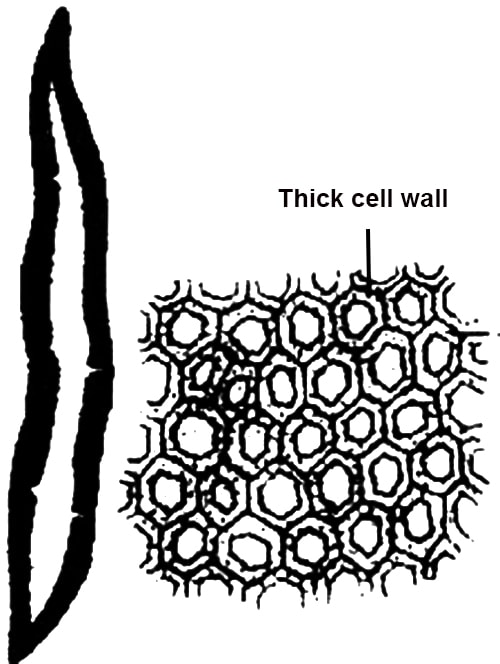
Fig: Sclerenchyma
